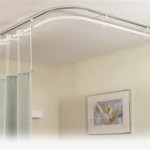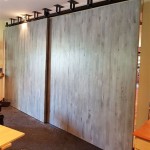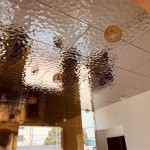When Were Drop Ceilings Popular in the World?
Drop ceilings, also known as suspended ceilings, are a ubiquitous feature in modern buildings. They have become the standard for commercial and office spaces, and even find their way into many residential homes. The popularity of drop ceilings has fluctuated throughout history, driven by a combination of technological advancements, aesthetic trends, and practical considerations. While their origins can be traced back to the early 20th century, their true rise to prominence occurred in the mid-20th century and continues to this day.
Early Developments and the Rise of Modernism
The concept of a suspended ceiling predates the term "drop ceiling" and the widespread use of this construction method. Early examples can be found in historical buildings, where wooden beams supported a layer of plaster or other materials, creating a space between the ceiling and the underlying structure. This allowed for easier access to utilities and provided a decorative element for the space.
However, the drop ceilings we recognize today emerged in the early 20th century, driven by the rise of modern architecture and a focus on functional design. The advent of new materials like metal and lightweight gypsum boards made it possible to create lightweight and easily installed ceilings. These ceilings were particularly attractive for commercial buildings, where flexibility and adaptability were paramount.
Post-World War II Popularity and the Rise of the Office
The period following World War II saw a surge in construction and the emergence of large office buildings. The need for efficient and adaptable spaces fueled the popularity of drop ceilings. Their ease of installation, ability to conceal wiring and plumbing, and modularity made them a highly desirable solution for office environments.
Furthermore, the modular nature of drop ceiling tiles allowed for easy replacement and customization. This was particularly important in office spaces, where changes in technology and layout were frequent. The versatility and practicality of drop ceilings made them the go-to choice for office architects and designers.
Continued Popularity and Adaptability
Today, drop ceilings remain a popular choice for a wide range of applications, from commercial buildings to residential homes. Their versatility, ease of installation, and affordability continue to make them a compelling option. They offer numerous benefits, including:
- Accessibility: They provide easy access to wiring, plumbing, and other utilities, making maintenance and upgrades simpler.
- Fire Resistance: Many drop ceiling tiles are fire-resistant, providing an added layer of safety.
- Sound Absorption: Acoustical tiles are often used in drop ceilings to reduce noise levels, improving comfort in offices and other spaces.
- Aesthetics: Drop ceilings are available in a wide range of colors, materials, and finishes, allowing for diverse design options.
While some modern architectural styles may favor exposed ceilings, drop ceilings remain a popular choice for their practicality and adaptability. They continue to be a cornerstone of commercial spaces and are increasingly found in residential settings as well. Their popularity is a testament to their long-standing function and ability to adapt to the evolving needs of modern life.

Dropped Ceiling Wikipedia

Everything You Need To Know About Drop Ceiling

Is A Drop Ceiling The Acoustical Prosoundweb

What Is A Drop Ceiling

Office Design The Benefits Of A Suspended Ceiling Arc Business Interiors

Diy Coffered Ceilings With Moveable Panels Renovation Semi Pros

Home Interior False Ceiling Types

Office Design The Benefits Of A Suspended Ceiling Arc Business Interiors

How To Install A Drop Ceiling 14 Steps With Pictures Wikihow

Ceiling Types Ceilings Armstrong Residential
Related Posts








